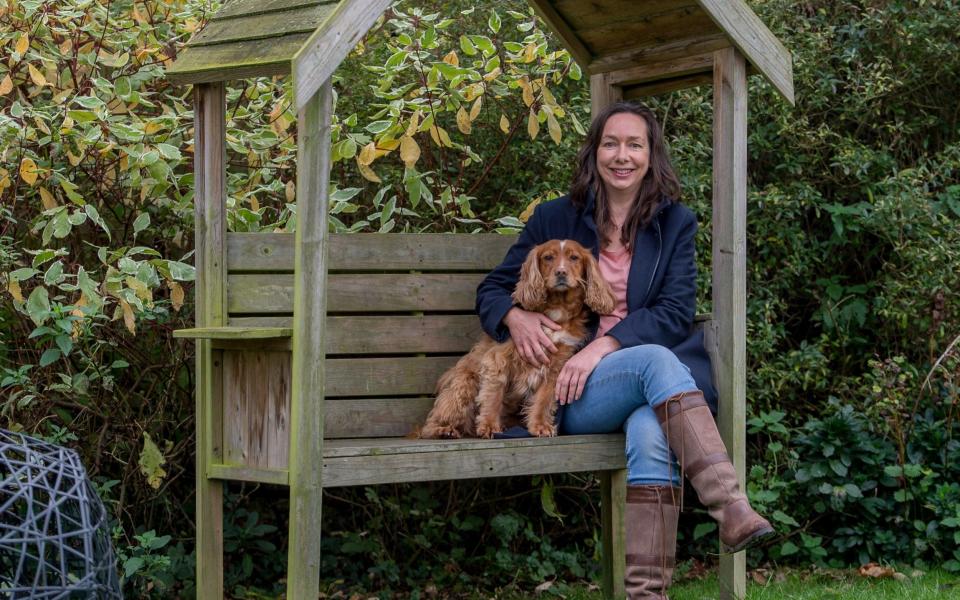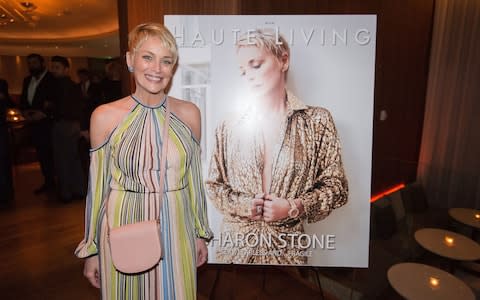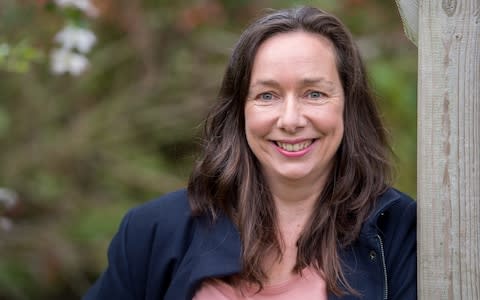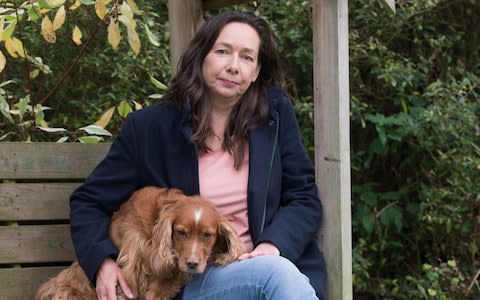How I survived a ‘thunderclap headache’

Louise Cole had just come off the phone to her mother when an unseen mugger hit her over the back of her head with a brick. At least, that was what it felt like. “It was an explosion in my head, so sudden and so violent and so excruciating that I hit the floor,” recalls the 51-year-old writer from Northallerton, North Yorkshire. “I felt completely dazed. It was by far the worst pain I have ever experienced – and I’m someone who gave birth without pain relief. I knew something was terribly, terribly wrong.”
Doctors call this excruciating pain a “thunderclap headache” and it is characteristic of a Sub Arachnoid Haemorrhage (SAH), an intra-cranial aneurysm (weak area in a blood vessel) that bursts without warning. A SAH is so deadly that it kills a third of those it affects before they reach hospital, with a further quarter dying in hospital. The majority of those who survive are left with long-term deficits and disabilities.
Louise’s cerebral mugging occurred shortly after she had celebrated her 50th birthday. Like her, most of those affected by SAH are female and relatively young – incidence peaks in the 40s and 50s. Actor Sharon Stone famously had a SAH at 43, spending two years learning to walk and talk again.
Nitin Mukerji, consultant neurosurgeon at James Cook University Hospital in Middlesborough, is campaigning for better awareness and funding for the condition. “It may be much rarer than stroke, affecting about 10 people per 100,000 of the population, and it doesn’t get the media attention, but the costs to society and to the economy are just as high,” he says.
“Unlike stroke which generally affects the elderly, SAH strikes young people of productive age, often those with dependents, and only around five per cent recover enough to resume their normal lives afterwards. My patients have been left unable to speak, or walk or work, some with personality changes. That’s happening to about 1000 people in this country every year. SAH effectively ruins lives.’

The most recent study, carried out in 2010, found that SAH costs the NHS £168.2m annually. The total economic burden (including loss of productivity) of SAH in the UK was estimated to be £510 million annually.
Somehow, in spite of her pain, shock and disorientation, Louise managed to drag herself up the stairs, crawl into her son’s room and beg him to call for an ambulance. “I was terrified and knew there was a very good chance I was going to die,” she says. By coincidence, a cousin’s wife had suffered a SAH at the age of 42, just a year before, so Louise recognised the symptoms. The majority of those who experience this devastating brain attack will never know what hit them.
On arrival at hospital, doctors discovered that Louise’s blood pressure was sky high, and she had tests including CT scans and a lumbar puncture, which initially proved inconclusive. Soon, in addition to the unremitting pain, she began to vomit constantly. After several days in the high dependency unit, where she felt she was on “death watch”, an aneurysm was finally discovered in one of her brain’s communicating arteries.

Following much discussion – “the surgeons were literally arguing over my bedside about the best way to treat me” – it was agreed that Louise would have endo-vascular surgery, which fixes the aneurysm by packing it with a wall of chainmail-like metal coils. This is less invasive and less risky than traditional neurosurgery.
Mr Mukerji says one of the problems with improving outcomes for SAH is that the true incidence of brain aneurysms – which might be treated, preventing a future SAH – is unknown. “We don’t know how many people have them [it is estimated that 3 per cent of the population has unruptured intracranial aneurysms] or enough about who or why, and we don’t yet know which ones will rupture, and which are safe to leave alone. At James Cook, we’re working on devising methods to identify dangerous aneurysms, so that they can be treated before they rupture and cause SAH.
“The other problem is that the current science doesn’t know what to do with un-ruptured aneurysms. We have some guidelines, but they aren’t very robust. The treatment itself is risky and complex, so it might not always be in the best interests of a patient to do it. But once a SAH has happened, treatment is effectively damage control to make sure the aneurysm does not re-bleed and cause another haemorrhage. The catastrophic damage has already been done.”

He adds that neurosurgeons feel that they’re not doing enough for patients: “At the moment, it’s all down to the judgement of individual surgeons, based on old data. We put a lot of money into diseases that affect the elderly and retired, but this area badly needs funding too. We need to do research that will identify aneurysms in the same way as police identify criminals by looking at a mug shot. If we can look at a scan of an aneurysm and study the vasculature around it, if we are able to definitely identify the characteristics, and we look at those in a great enough number of aneurysms, my hypothesis is that we will be able to separate the rogue ones from the benign ones.
“And if that is possible, and we combine that with the other clinical data we have – for example, known risk factors like smoking and family history – we should in the future be able to give a very personalised recommendation to our patients of the lifetime risk of rupture, and whether they need surgery.”
It took Louise four months to recuperate after her surgery. “The fatigue was overwhelming, and the exposure to radiation during the procedure, which took place inside a CT scanner, also affected my hormones, causing lots of unpleasant side effects. I was told very clearly I’d never be the same person I was before, that I would find it hard to read or write or concentrate for more than a few minutes at a time.
That terrified me – reading and writing is what I do. And my son, then 23, was still living at home, and still financially dependent.
“But I have been incredibly fortunate to be left with no significant neural impairment. To all intents and purposes, I have made a full recovery. That’s almost unheard of. I’ve gone back to work running a media agency, and since my SAH I’ve even published my first novel.”
Mr Mukerji says that it’s important that the general public is made aware of the symptoms of SAH. Unusually, there are no specific charities or patient support group in the UK campaigning or providing information about the conditions, mainly because there are not enough survivors fit enough to run them.
“If two or three of your close family members have experienced a SAH, don’t panic, but go and consult with a doctor about screening. If an aneurysm is found incidentally, such as when you’re having a brain scan for another reason, seek advice. Finally, If you have a sudden onset of the worst headache you’ve ever experienced, which feels like someone has hit you over the back of the head with a massive baseball bat, get yourself straight to a hospital.”
Louise agrees: “A SAH will probably never happen to you or anyone you know, but it might, and being able to recognise in that moment of staggering pain what’s happening means you have the chance to get to get treated quickly, and hopefully survive.”

 Yahoo News
Yahoo News 